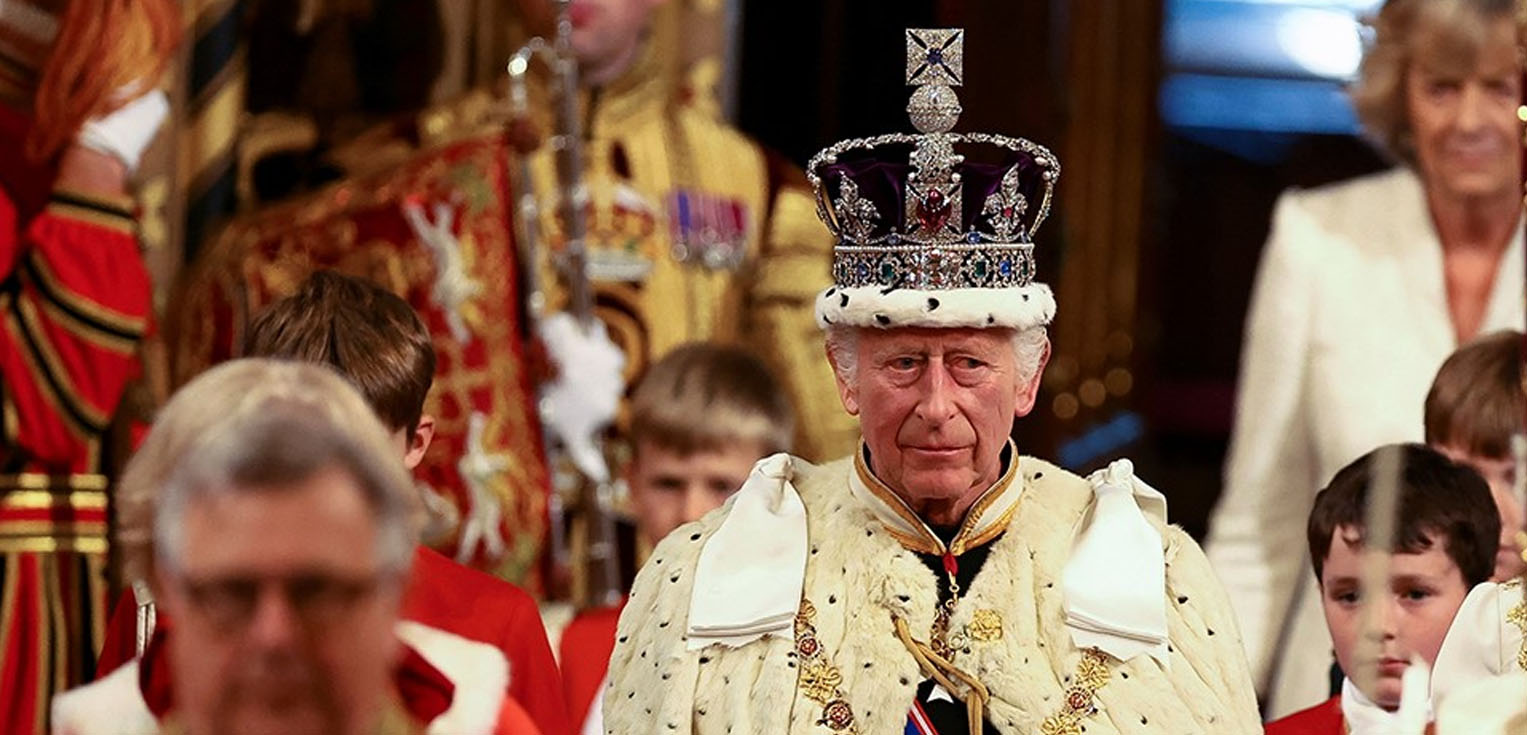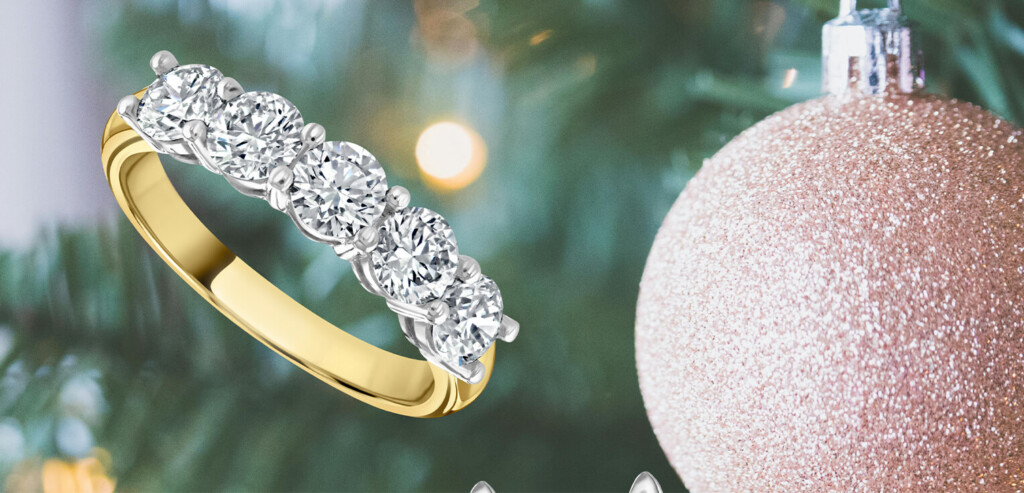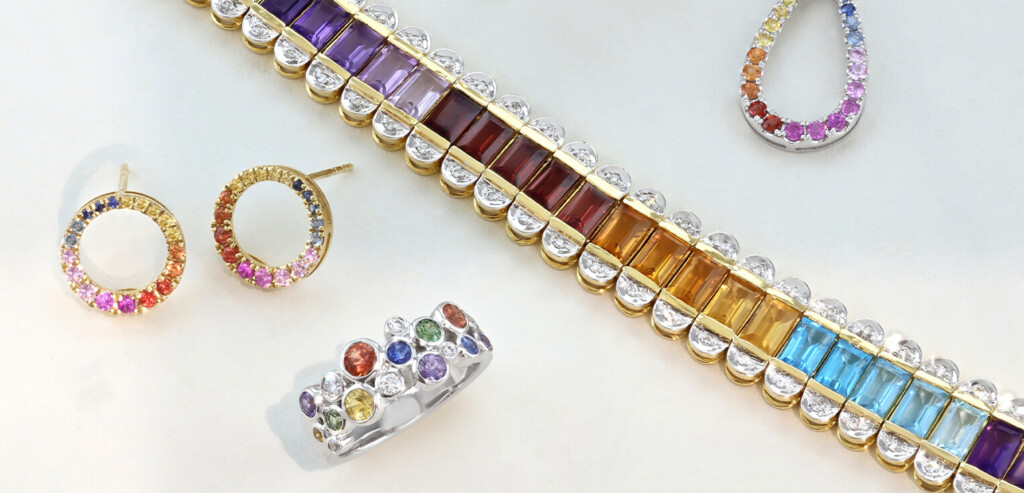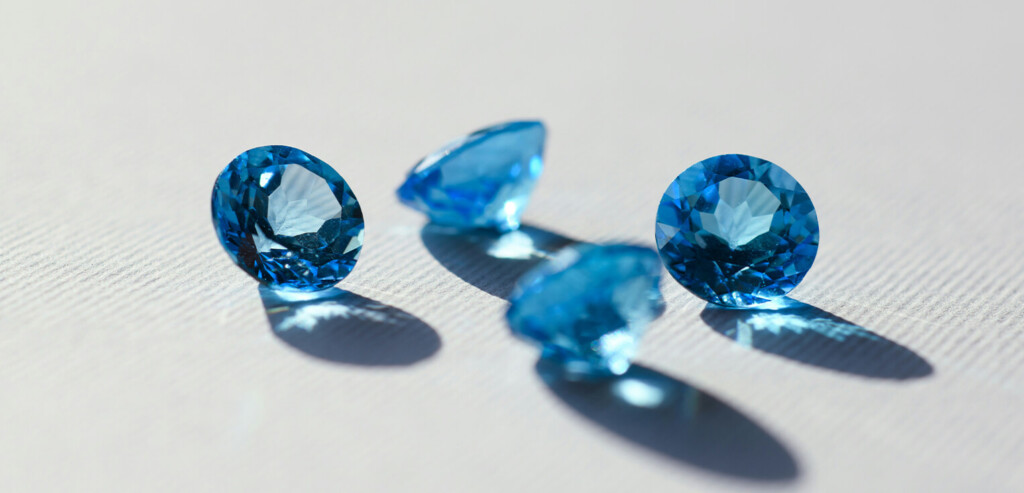The British Royal family are known for their beautiful jewellery collection, often choosing heirloom pieces seeped in history and meaning, passed down from previous monarchs.
From tiara’s worn at Royal Weddings, to recognisable engagement rings, pearl necklaces and signet rings, we are taking a look into the archives to showcase the most iconic jewellery pieces from the British Royal family.
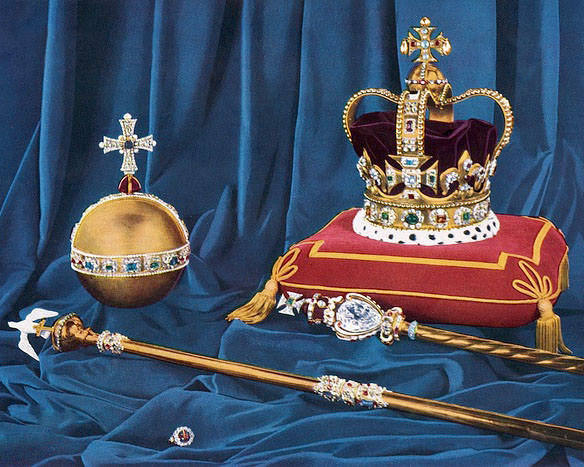
The Crown Jewels
When talking about the most iconic jewels in the British Royal Family’s collection, we must discuss the Crown Jewels. The Crown Jewels are a collection of ceremonial items used in coronations and many other important ceremonies. They include items like sceptres, spoons and orbs, and, of course, crowns!
St. Edward Crown
The original St. Edwards Crown was thought to date back to the 11th century and was used to crown all English sovereigns until 1649. This was when the monarchy was abolished, and Parliament ordered for the crown to be broken up and melted down.
When the sovereign was reinstated in the 1660s, a new state crown was commissioned, meant to faithfully reflect the original St. Edward Crown although took influence from design of the time too. The current St. Edward Crown is made from a solid gold frame set with various precious and semi-previous stones, like rubies, amethysts, sapphires, garnet, topazes and tourmalines. The crown also has a purple velvet cap with a fur band.
The St. Edward Crown is only used in the moment of crowning a new monarch, and it was used in the coronations of both Queen Elizabeth II and King Charles III.
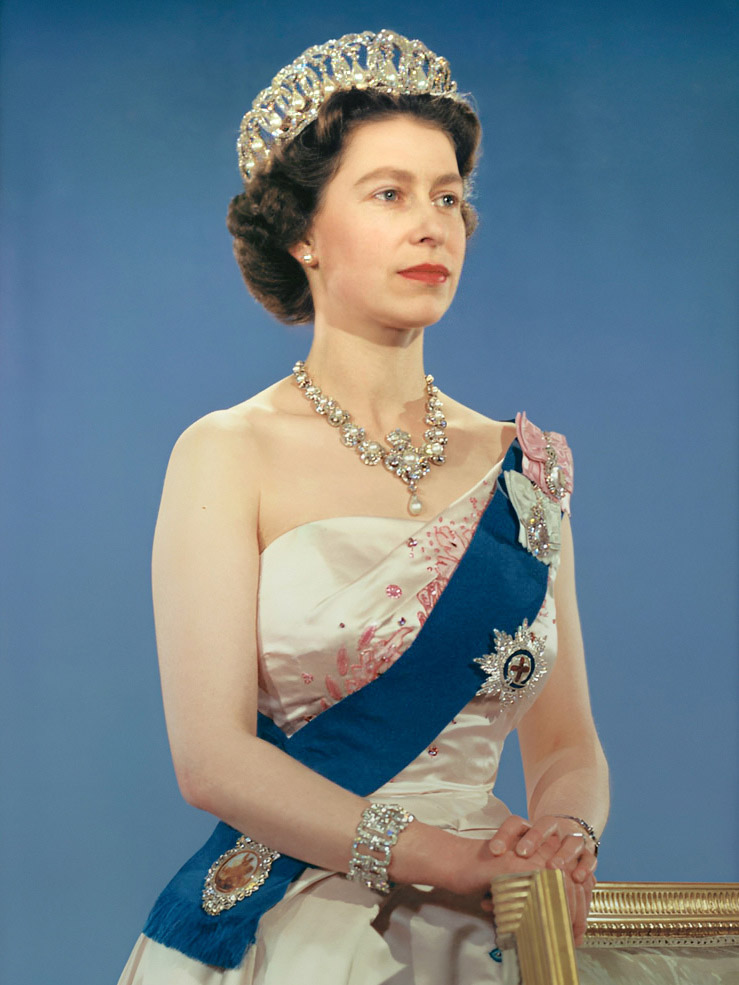
Imperial State Crown
The Imperial State Crown is the crown worn by monarchs when they leave Westminster Abbey after the coronation or at other State occasions such as the annual State Opening of Parliament.
The original Imperial State Crown was made for Queen Victoria’s coronation in 1838, and was remade in 1937 for the Coronation of King George VI. This version, still in use today, is made with a gold frame and is set with almost 3,000 diamonds alongside sapphires, emeralds, pearls, and rubies.
All of the Crown Jewel’s hold such immense historical significance and irreplaceable financial value that they are held under lock-and-key at the Tower of London.
What are the most iconic pieces of Royal Jewellery?
Queen Victoria Brooch from Prince Albert
One of the oldest pieces of jewellery in the royal collection is the sapphire and diamond brooch that Queen Victoria received from her husband-to-be, Prince Albert, on the day before their wedding in 1840.
So enamoured with the brooch, Queen Victoria pinned it to her wedding dress, very in keeping with the ‘something blue’ tradition made popular in the Victorian era!
Upon Queen Victoria’s death in 1901, she left the brooch as an ‘heirloom of the Crown’, which meant that the piece should be worn by all future queens. So far, the four queens and queen consorts since—Queen Alexandria, Queen Mary, Queen Elizabeth (the Queen’s mother) and Queen Elizabeth II—have been seen wearing it. Look out for Catherine, Prince of Wales sporting it soon!
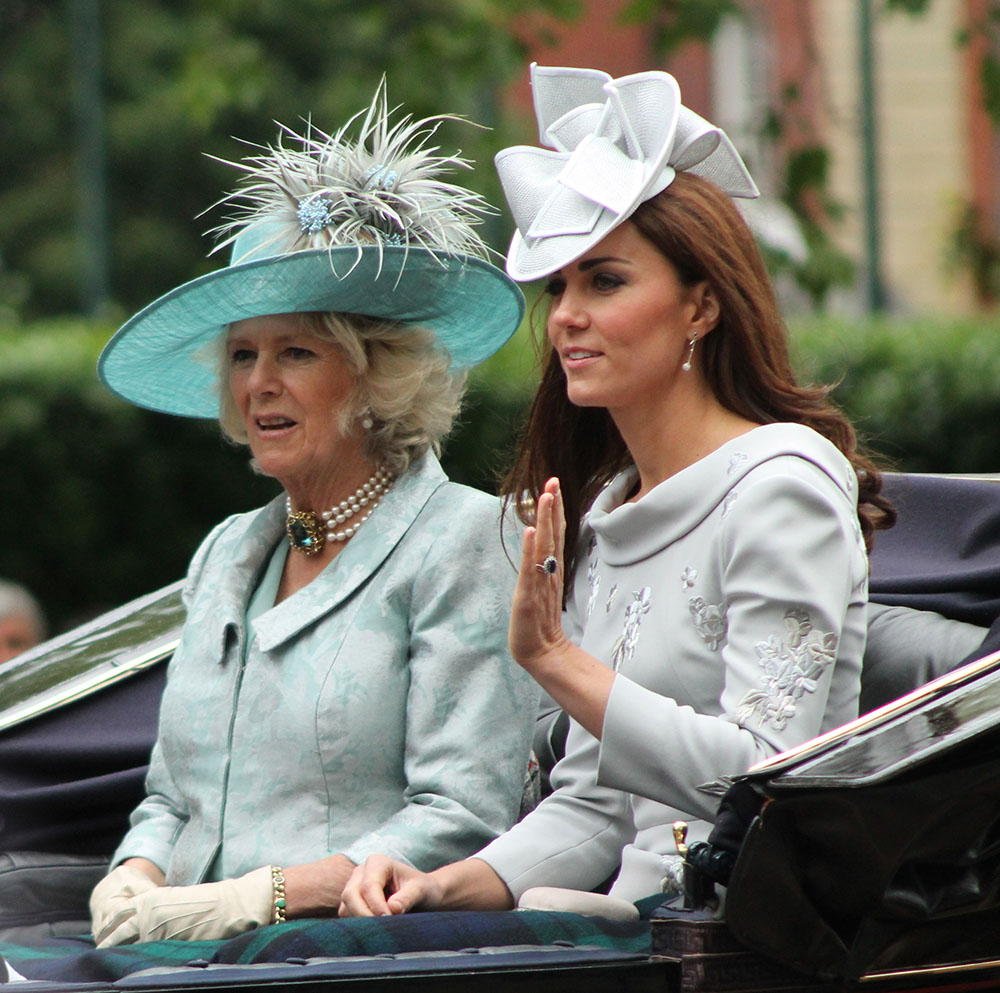
Princess Diana’s Sapphire Engagement Ring
One of the most recognisable and famous engagement rings in history is Princess Diana’s sapphire cluster ring, now worn by Catherine, Princess of Wales.
This beautiful white gold ring was set with a 12 carat Ceylon sapphire and surrounded by a halo of 14 solitaire diamonds and is said to be inspired by the brooch we discussed above.
Unlike all royal engagement rings before, Diana’s ring was not custom made. Instead, this brilliant blue engagement ring was personally chosen by Diana from a jewellers catalogue in 1981, meaning that ordinary people could purchase the exact same ring – if they could afford the luxury price tag that is!
Controversially, even after their divorce in 1996, Diana continued to wear her engagement ring, which Prince Harry inherited after her death in 1997. In 2010, Prince Harry chose to give this ring to his older brother, William, to prose to Catherine. Who knows, perhaps it will be passed down to the next generation of Royals, too!
Queen Elizabeth’s Pearl Choker
Pearls hold a significant place in British Royal Family tradition. Queen Elizabeth I wore pearls to symbolise her virtue and chastity, often adorned in pearls in portraits.
Many other royals followed suit, including Queen Elizabeth II, whose pearl and diamond choker necklace has been worn by many modern Royals. This four-strand necklace features freshwater pearls that were gifted to the Queen by the Japanese government during a state visit in 1975.
Later, in 1982, the Queen loaned the choker to Diana, Princess of Wales, who wore it to a banquet at Hampton Court Palace, paired with Queen Mary’s Lover’s Knot Tiara (below). The pearl choker has now been passed on to Catherine, Princess of Wales, who has worn the necklace on several occasions.
Queen Mary’s Love Knot Tiara
Another pearl piece from the royal collection originally belonged to Queen Mary, who had the Love Knot tiara made in 1913. It played homage to her grandmother, Princess Augusta of Hesse’s Lover’s Knot Tiara, who received it as a wedding gift in 1818.
Queen Mary’s Love Knot Tiara reused pearls and diamonds from another tiara in her collection, a great example of how you can transform heirlooms into new pieces!
After Queen Mary’s death in 1953, the tiara was given to her granddaughter, Queen Elizabeth II. It was subsequently worn by Princess Diana and Catherine, who first wore it publicly in Buckingham Palace in 2015, over 100 years since it was made! Since then, it has become one of Catherine’s favourite headpieces.
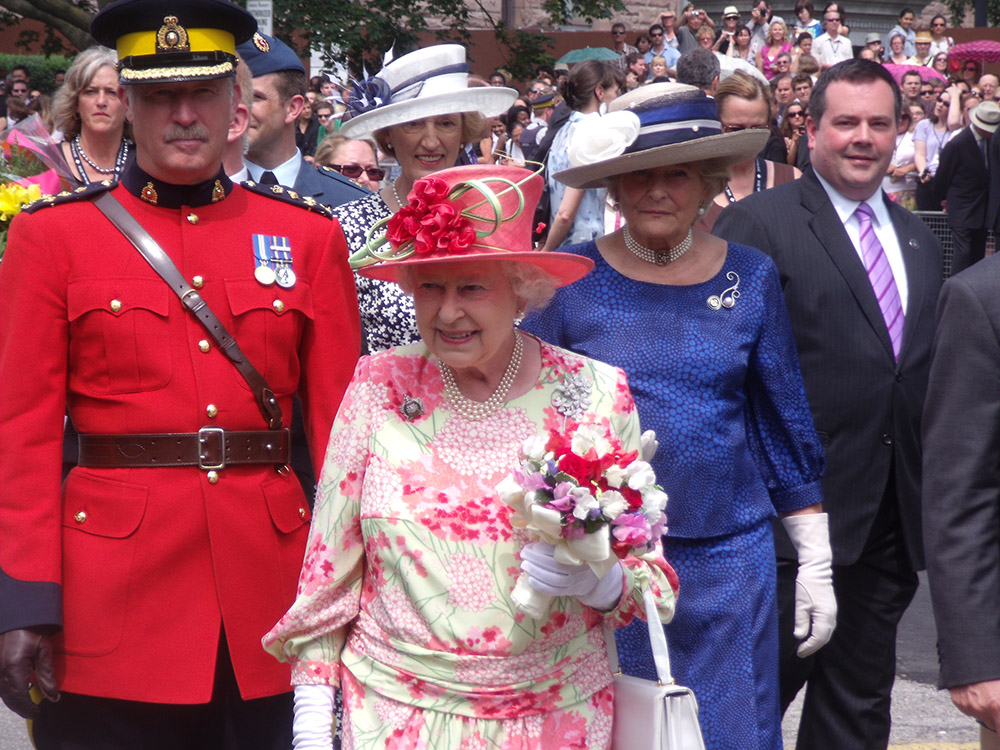
Queen Elizabeth’s Cartier Halo Tiara worn by Catherine, Prince of Wales
Similarly, another very famous tiara from the Royal collection is the Cartier Halo Tiara. This stunning piece was originally purchased in 1936 by King George VI for his wife, Queen Elizabeth, the Queen’s Mother.
She subsequently gifted it to her daughter, then-Princess Elizabeth, on her 18th birthday.
In modern Royal history, the Cartier Halo Tiara was worn by then Catherine Middleton on her wedding day to Prince William in 2011, making it a very memorable and recognisable piece within the collection.
Queen Mary’s Diamond Bandeau worn by Meghan Markle
A surprisingly modern tiara, Queen Mary’s Diamond Bandeau features the County of Lincoln Brooch in the centre, that Queen Mary received as a wedding present in 1893.
Forty years later, in 1932, this headpiece was created, with its sleek design reflecting the streamline art deco style of the time.
After Mary’s death in 1953, the tiara was passed down to Queen Elizabeth II, who famously, lent the Diamond Bandeau to Meghan Markle for her wedding to Prince Harry’s in 2018.
King Charles III’s gold signet ring
Jewellery isn’t just for the women in the royal family! Traditionally, men in the royal family do not wear jewellery however, except for watches and wedding bands. However, there are some male monarchs who have challenged this.
Prince Philip wore his father, Prince Andrew of Greece and Denmark, signet ring, and most notably, our current monarch, King Charles III, followed his father’s lead and has rarely been seen without his gold signet ring.
King Charles, then Prince of Wales, has worn this pinky ring since the mid 1970s featuring the Prince of Wales crest and made from Welsh gold. The ring was previously worn by Charles’ uncle, Prince Edward, the Duke of Windsor, though the ring itself dates back over a century.
Final Thoughts
The Royal collection is filled with one-of-a-kind historical jewellery that is passed down through the family, and often redesigned or reworn by multiple generations, proving the importance of choosing high quality, timeless pieces when building a jewellery collection.
Looking for jewellery fit for a Queen?
Get in touch with our jewellery experts, who can help you find your perfect piece, or design your very own bespoke jewellery item.
Image sources:

